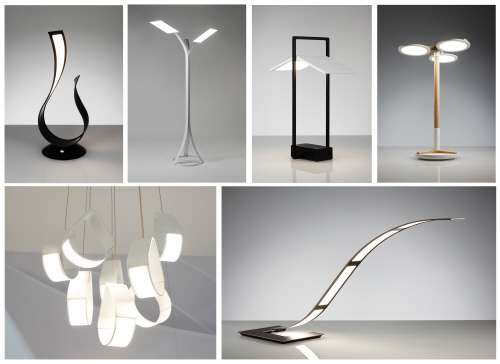OLED light panels from LG Chemical will begin mass production from November this year, said Korea Bizwire on September 11. LG Chemical is talking about a life of 40,000 hours, up from 20,000 hours, and closer to that of LED lights of 50,000 hours.
Korea JoongAng Daily, providing details last week, said that LG Chem, Korea's largest chemical company, has developed an OLED panel with the world's best luminous efficacy and longest life. "The company under LG Group said its OLED panel has a luminous efficacy of 100 lumens per watt, almost double compared to 60 lumens per watt achieved before, and a life of 40,000 hours." LG Chemical plans to focus on markets in North America and Europe and it has already secured 50-plus lighting companies, including Atlanta, Georgia-based Acuity Lighting, said Korea Bizwire.
The latter company, with the motto "Expanding the Boundaries of Lighting," is serious about OLED and launched a special OLED microsite that imparts information for lighting professionals. "An OLED by its very nature is a planar area source, with a uniform glow and rich color. Easy to handle and cool to the touch, it invites you to the source to gather and is meant to be seen. The emitted light from an OLED is calm, comfortable and glare-free, even without shrouds and diffusers." Another point that Acuity Lighting makes to lighting professionals involves OLED's efficiency merits. Through the development of new lighting concepts, the group wrote, "we've discovered that OLEDs yield higher application efficiency over conventional lighting." In a white paper by a company team, it was stated that "Compared to other types of lighting systems predominantly used for commercial and institutional lighting, discrete low-luminance tiles of OLED lighting can create a lighting system that makes significant improvements in application efficiency."
OLED (Organic Light Emitting Diode) is an organic materials-based light source. The source of the light is the EML (Emissive Layer) which responds to electric currents by emitting light. In June, LG Chem showed off its OLED technology at the LightFair International 2014 in Las Vegas, where they showcased OLED human-friendly benefits of no glare, no heat, and being free of UV. They also talked about OLED lighting solutions being thin and light, easily integrated into various types of architecture. The event also gave LG Chem a chance to further test the waters of feasibility in the North American market.
There is, however, a potential stumbling block to uptake. Korea Bizwire noted that "the main reason OLED lighting devices have gained little foothold in the market is its high price." LG Chem is aware of the price comparison of more expensive OLED compared with LED lights and looks forward to prices eventually going down. A company official told, "We could increase the production yield significantly by applying a new OLED material. Once we begin the mass-production of the devices in earnest, we will be able to reduce the unit cost almost as low as that of LED lights."
Back in June, Maury Wright, editor of LEDs Magazine, had said, "it's advancements in manufacturing that will enable the price reduction at LG Chem. The company said that it has altered the glass substrate and the encapsulation materials used in its panels. The result will be thinner and lighter panels with no loss in performance."
Sean Chung said LG Chemical has its sights set on markets in North America and Europe. Automotive lighting is also seen as a promising growth path. "In partnership with major auto makers in Europe and Japan," said Chung, "the company is currently developing OLED lighting panels for automotive tail lights with plans for mass production by 2017."
© 2014 Tech Xplore
























